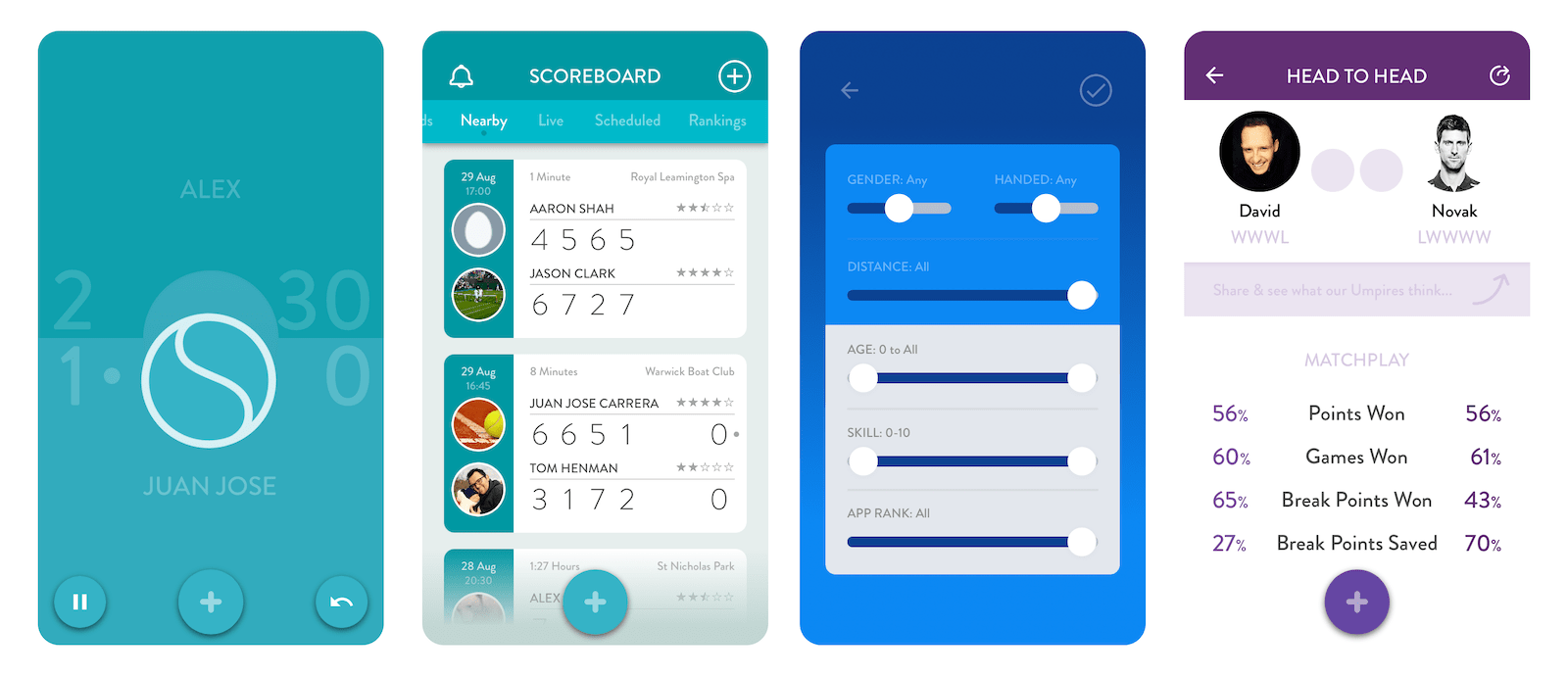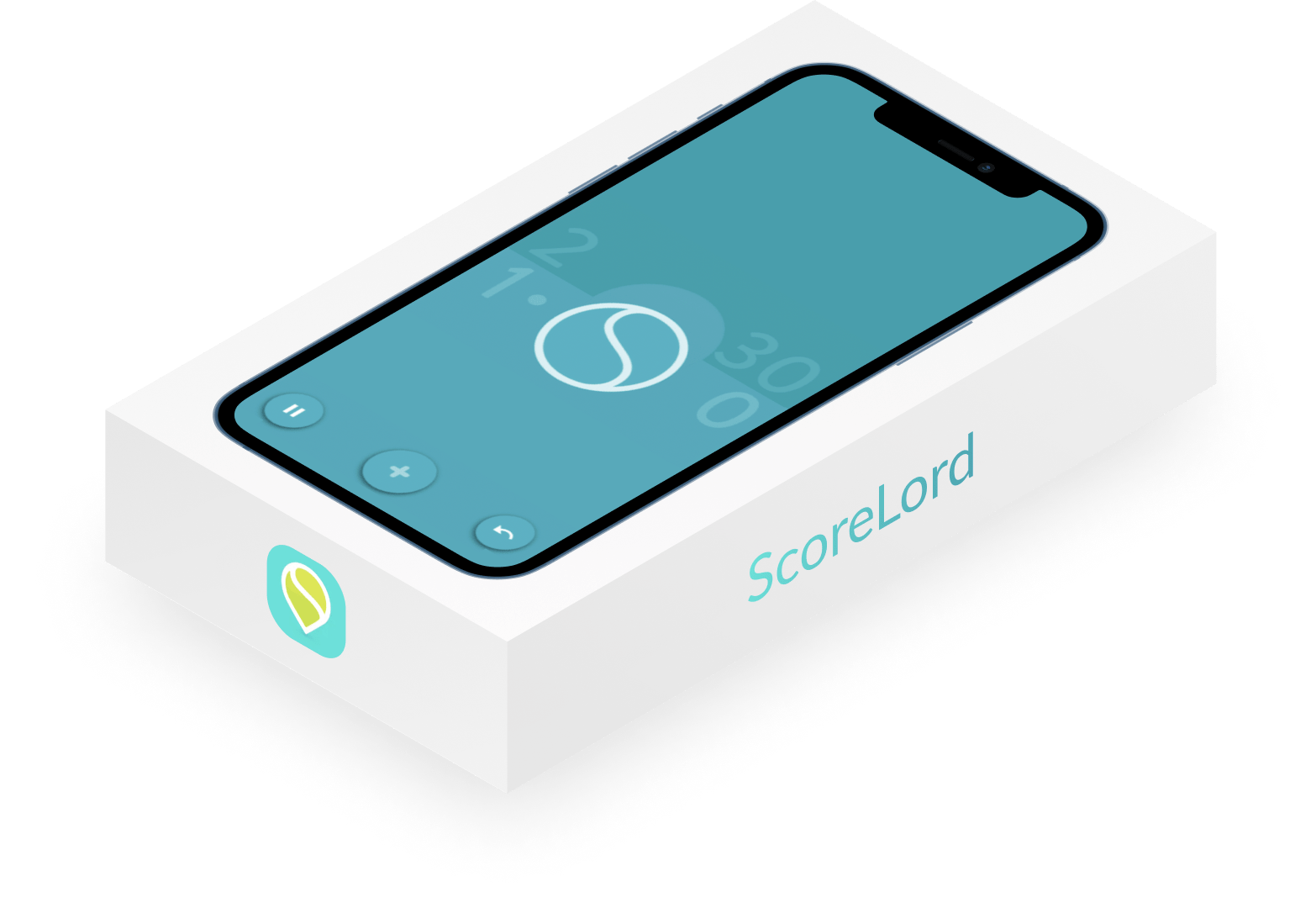The Problem...
1. Meeting your match
Finding local tennis players outside of local clubs & education was challenging, Players of similar ability were tricky to find. Sites existed in major cities but a social tennis app & network was missing.
2. Scoring was boring
Despite the onset of the Apple Watch, scoring matches relied on memory or a spectator on the sidelines. There was surely a way to make scoring points in matches simple, fun & intuitive.
3. Professional Stats
The professional game includes many statistics like 1st-serve %, aces & break points won. If every single point was scored, perhaps stats like these could be accessible to the average Tom Henman.
The Solution...

The Learnings...
What was the biggest takeaway?
Getting infront of customers early and testing assumptions. This product was built out of a personal need and desire for a cool tennis network. Many of the features I'd placed great emphasis on, such as seeing live matches & comparing statistics with players were perhaps not as important to others. This eventually led to a bloated initial product, introducing both great complexity & cost.
Ultimately it was my first project in mobile development and I hugely enjoyed coding & managing my own app. More so than I would have by studying a course in Product Management. Having had this experience, I now will value having a lean MVP and bringing it to market sooner, over building a huge social network.
What was your favourite part of the project?
Seeing the fruits of my own labour & teaching myself to code. This was hugely empowering, particularly as there was a real product born. Encountering bugs & scanning the web for answers was ultimately satisfying, once you overcome these minor challenges and see your own software born into your own hands.
It was particularly enjoyable seeing a great user interface and a novel product that had not existed before, being used by people online. The project gave me a much greater appreciation & understanding of the work that developers do each day.
I also learnt that I loved building beautiful UX and animations on the front-end, testing on devices and constantly iterating products.
What would be done differently next time?
A greater focus on the scoring interface & on launching an MVP sooner would have helped the project's longevity. I would have deprioritised the problem of finding local tennis players & instead built a paid subscription offering around the scoring interface and statistics that come with that. Likely even performing Usability Testing on prototypes before even having written a line of code.
Had the product had some significant revenue coming-in from approach, I would also have spoken to tennis clubs directly regarding their needs. This as a way of growth-hacking and attracting users to the app. Only then could the app market itself as a tennis network and begin to address this problem.
Lastly, I perhaps would have chosen a platform-agnostic architecture (e.g. React Native) rather than native Swift, as that would have allowed an easy roll-out to an Android audience in conjunction with those using Apple devices.
How could the product be improved today?
The app was launched and made it to devices but was later abandoned. This was due to a variety of reasons. Firstly, the costs of updating the code-base and fixing some critical bugs were significant, as they were beyond my technical capabilities. There was also an initial tame traction for the product and no monetisation of the product.
If this project was to be re-born today, it would been best to partner with local or national tennis clubs, to provide them with the insights and statistics they seek. A platform to provide them with data and leaderboards, potentially outside of the app via an API. This would attract members of those clubs to join and start building some of those missing network effects for Scorelord.
Scorelord had an incredible user interface for scoring matches. Including swipe to select winner, double-tap for ace, scrolling the 'digital-crown' on Apple Watch etc. It could have had a modest future focusing on that. It was a hugely satisfying hobby & learning project. I am OK with it having been just that, for now at least.
